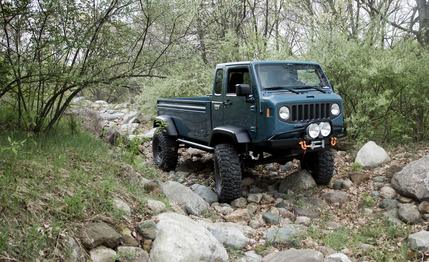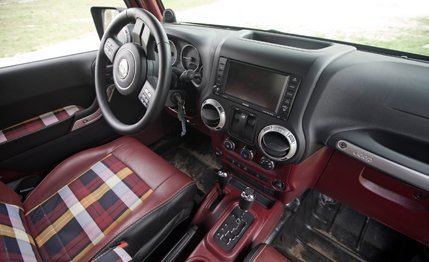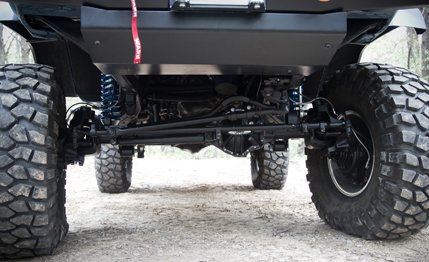
 First Drive Review
First Drive Review
At first glance, the Jeep Mighty FC concept defies any preconceived notions you may have regarding scale and balance. Alarmingly front-heavy and precipitously perched, it runs roughshod over generally accepted tenets of vehicle design.
When the original Jeep FC (Forward Control) sprang forth from the mind of industrial designer Brooks Stevens (the same guy who designed the classic Miller Brewing logo!) back in the 1950s, its mission was not off-road prowess but improved space efficiency and versatility. It placed the occupants above and in front of—rather than behind—the powertrain.
The new Mighty FC concept performs the same packaging trick, and so it retains the family visage. As Mark Allen, head of Jeep Design and the prime instigator behind the Mighty FC, puts it: “As soon as we unveiled it in Moab [at the annual Easter Jeep Safari], everyone recognized it, which amazed us. We thought it would have a fan base of about five people. As it sits here, it’s somewhere between an engineering mule and a static concept vehicle.”


The FC’s cab was hewn from the two-door Wrangler, retaining the windshield, A-pillars, and doors; the roof is from Mopar’s JK-8 pickup kit.
To enter, the long-limbed and nimble may find it easiest to simply scale one of the nearly 40-inch-high tires; the vertically challenged and aged may prefer to climb upon the rock sliders (repurposed Jeep four-door rock rails, cribbed directly from the Mopar catalog) and shimmy over the tire.
The interior consists largely of stock Wrangler items, including the dash, steering wheel, and shifter. The seats are wrapped in plaid upholstery partially stitched up from a Burton snowboard bag, the tags and zippers left intact. Given the obvious volumetric peculiarities of the cab-over configuration, the driving position is surprisingly comfortable.
A Wrangler Rubicon’s 3.6-liter V-6 engine and automatic transmission both remain virtually stock. The chassis came from the same Wrangler, albeit lengthened to provide a 117.0-inch wheelbase.


Post-inspection, we are set loose on the Jeep trails located deep in the bowels of Chrysler’s Chelsea Proving Grounds. First up: a several-hundred-foot rock staircase that the FC conquers almost effortlessly in both directions; there’s some mild wheel hop during the climb, but the descent is graceful. Next we confront a downhill with staggered whoops designed to test axle articulation. It’s here that the ass-over-axle seating position makes itself felt, providing a sensation dynamically opposed to everything your author’s inner ear has learned about vehicular poise. The ground comes up directly in front of us; making a mistake here pretty much guarantees that our feet and ankles will spend the next few months encased in plaster.
“The portal axles are the real story here,” says Allen. “They provide about 5.5 inches of lift due to their design, which uses gears in each wheel hub to raise the main axle tube above the wheel centers.” Aside from the 39.5-inch Krawler tires mounted on 17-inch Hutchinson bead-lock wheels, there isn’t a lot of additional suspension lift. It’s got coil-over shocks with remote reservoirs and TeraFlex control arms, but otherwise the chassis is stock. It weighs about 6500 pounds all in, with a heavy bias toward the front.
Approaching a boulder-strewn uphill that would stymie even experienced wheelers, we lock the front and rear diffs and effortlessly idle up the incline, occasionally lifting a tire into the air.
So the FC works even better than it looks—a rare trait for a concept vehicle. If Jeep puts it into production (the FC has a small chance), we bet there’d be more than five people lining up for it.